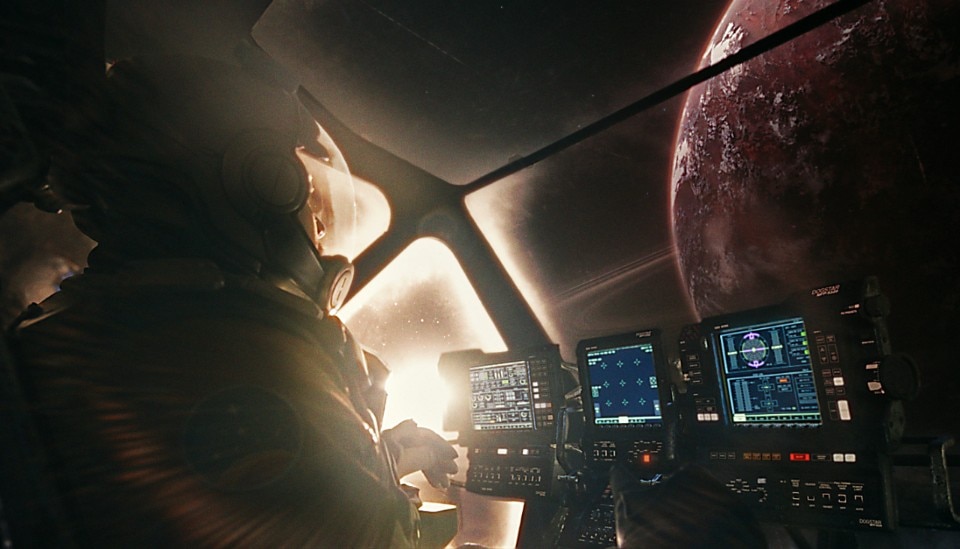Cyberpunk was the first one. Then dreadpunk, dieselpunk, solarpunk, rococopunk came. They are all attempts to define the genre and aesthetics of the fantastic, starting from the 1980s onwards. For example, steampunk is the antithetical genre of Victorian-based cyberpunk, whalepunk is a subgenre in which whale oil, and not steam, is the necessary resource to move engines and machines, and so on. They all have the -punk suffix in common, which remained as a signature but lost any of its original meaning, that of a highly technological world in which the main characters move in the slums of the city: this was the cyberpunk made famous by Neuromante by William Gibson, published in 1984.

Starfield’s NASApunk
Last to this heterogeneous family is NASApunk, which reinterprets the 1900s golden age of special exploration by rewriting its utopian spirit with a strong material component of the gear of the time in a digital key. NASApunk is a rational design created as a reference for the aesthetic of a new videogame, Starfield. The long-waited game was the first new intellectual property (translated into common language we could say “the new universe”) launched by Bethesda Game Studios in the past 25 years. The development studio is an institution in the action RPG videogames, famous for its fantasy series Elder’s Scroll (of which we all know the chapter entitles Skyrim, the seventh best-selling video game ever) and the postapocalyptic Fallout. On its release day in 2015, Fallout 4 generated over $750 million dollars (not to use it as a term of comparison, but it’s about ten times more than what Barbie made).
.jpg)
Starfield was also highly anticipated because in 2021 Microsoft bought ZaniMaz, the company owning Bethesda, for 7.5 billion dollars (not much less than what Disney paid for Lucasfilm). Starfield, which was announced in 2018 but it has been incubating for a decade, is the first big launch after this acquisition, which is decisive for Redmond’s gaming strategies, and crucial to reviving the next-gen Xbox console and inject strength into the Netflix equivalent of the Microsoft videogames, the Game Pass.
.png.foto.rmedium.png)
Why Starfield is so relevant
But what is Starfield? It basically is a space exploration game. But it is also a game that aims to go where no gamer has ever gone before, for a very specific reason: it’s humongous. We are talking about 100 explorable solar systems with about 1,000 planets, all carefully designed (a game released a few years ago, No Man’s Sky, had a similar structure but used an automated procedural system to build the different worlds as the gamer explored them). Starfield comes in a moment in which special exploration is revitalized thanks to the SpaceX launches and the Indian landing on the moon. The design and architecture worlds were also directly involved, and even the last Triennale curated by Ersilia Vado was dedicated to space. Todd Howard, the golden boy – still a boy even now that he’s in his 50s – of the Bethesda Game Studios and director of Starfield, who has a SpaceX model signed by Musk himself in his studio, recounts a long piece in the British edition of GQ by Sam White.
Starfield is an exploration, in the shape of a game, of how humanity could really live in space, but with a necessary pinch of epic and a sprinkling utopia to give more vitality to the storytelling. But with a very concrete design as well. The key word, metaphorically placed by art director Istvan Pely on the developers’ table in order to give a shape to the project, is precisely NASApunk. “Early on in this project when we were trying to establish the overall aesthetic of this game, we sort of coined the term ’NASA-Punk’ to describe a sci-fi universe that’s a little more grounded and relatable,” the art director explained to Xbox Wire, the official press channel of the Microsoft gaming department. NASApunk goes back to the 1950s and 1970s, when space was a frontier of conquest, an extraterrestrial reflection of the conflict between the two superpowers, US and USSR, that ran parallel to the arms race and the growing tension of the Cold War. However, all this is absent in Starfield: the only thing left is the somewhat Western enthusiasm for that challenge. And the aesthetic we know.
.png.foto.rmedium.png)
Back to the Space Age
So here there are in Starfield large and not-so-large starships that revive the lines and patterns of the Apollo missions, with an incredibly realistic reworking yet capable of distancing itself from the original model. And then concrete buttons, many tactile commands and very few futuristic or simply touch interfaces. Even the space suits are anything but minimal; they envelop people like armor, redefining their bodies. Indoors and outdoors, spaceships echo that somewhat rough engineering touch that we see in the sci-fi masterpiece Interstellar by Christopher Nolan, in which the protagonist Joseph Cooper, interpreted by Matthew McConaughey, moves in the spacecraft spaces that look straight out of a mechanical workshop and not from the lucid, comforting, and with no straight angles dream elaborated by any Midjourney. But some of the references can be traced back to the first movies of the Alien series, the cult anime Planetes, and the Apple series For all mankind, on space pioneers and, of course, 2001 by Kubrick, the epic movie released the same year as the moon landing.
.jpg.foto.rmedium.jpg)
But Pely’s effort and that of Bethesda’s developers focused on going beyond the visual identities that redefined the most classic sci-fi of the past few years in movies, series, and above all videogames, with the celebrated Mass Effect and the previously mentioned No Man’s Sky as examples of highly abstract aesthetics to be avoided at all costs. For Pely, the concreteness at the base of NASApunk plays also the role of anchoring the player while the Starfield storytelling raises them to the unknown and beyond. In a way, this extreme materiality counterbalances the high spirituality of the game, which – as the art director explained – is traversed by constant doubts on the existence of extraterrestrial life somewhere out in the universe.
Graphic design and layouts also play an important role in Starfield. From the meticulous and complex one of the watch, a kind of smartwatch that provides essential information to the protagonist and thus to the player, whose dial appears in constant overlay on the screen, to those of the billboards and decorations for example of New Atlantis, which recall the imagery of the post-war boom years and sometimes wink directly at the Nasa logo and the visual identity of the American aerospace agency.
.png.foto.rmedium.png)
Exploring Starfield’s universe
Of course, a major part of the job of those who designed the gigantic universe of Starfield had to do with finding variants and stratifications that didn’t make all the systems look alike while maintaining a coherent basic vibe. An example is the designing of the cities. In the main city, New Atlantis, elements of NASApunk and midcentury modern blend together in a parametric touch that characterizes the design of certain buildings (some look like they could have been designed by Zaha Hadid). All this accompanied by an important used of warm palettes and light hues. There are many Easter eggs; for example, in the city, one of the densest that the studio has ever created, you can see an airport hub clearly inspired by mid-twentieth-century American architecture, which is placed right next to 1950s-style buildings, and so on. But like real cities, New Atlantis has many layers, as Pely explained, “It’s not just a singular designer’s vision, because then it’s not going to feel real. It’s going to feel like a theme park.”
In Starfield, the player is immersed in complexity. Complex objects, intricate natural and man-made landscapes, and multilevel cities dialogue with a system of interfaces, stacked on top of each other like matryoshkas, that is punctilious and organized into graphical apparatuses that are as minute as they are meticulous. Pop-up signs keep the player constantly updated by informing him or her of the world he or she explores, and dialogue choices are like footnotes on the screen. This even verbose complexity appears to diverge from the technology we have become accustomed to in the smartphone years, which rather favor the colorful icon, the emoji, the absolute simplification of design. Beware, however, because underneath this appearance, Starfield is actually an intuitive and all in all linear game, in which visual apparatuses complex to the point of seeming contrived unfold around a game system that is soon familiar, to dynamics certainly not unheard of for a title that has major commercial goals, grafted in short into a well-trodden groove, while an appealing but not exactly original story is punctuated by music that is all too epic. In all of this, NASApunk is a luxurious body of work, with a complexity that creates paradoxical effects, as when the protagonist wanders around wrapped in his suit complete with helmet in cities where there would be no need, or as he creates completely nonsensical, but in fact effective, trajectories to marry in a multilevel urban context like New Atlantis. Gaming clichés, sure, but they detract somewhat from the work on aesthetics by Pely and his collaborators.

Bethesda provided Domus with a Steam download code to play Starfield for the purpose of writing this article. All images courtesy of Bethesda.

A new world of Italian style
The result of an international joint venture, Nexion combines the values of Made in Italy with those of Indian manufacturing. A partnership from which the Lithic collection of ceramic surfaces was born.






.png.foto.rmedium.png)
.jpg.foto.rmedium.png)
.jpg.foto.rmedium.png)
.jpg.foto.rmedium.png)
.jpg.foto.rmedium.png)
.jpg.foto.rmedium.png)
.jpg.foto.rmedium.png)






.jpg.foto.tbig.jpg)
